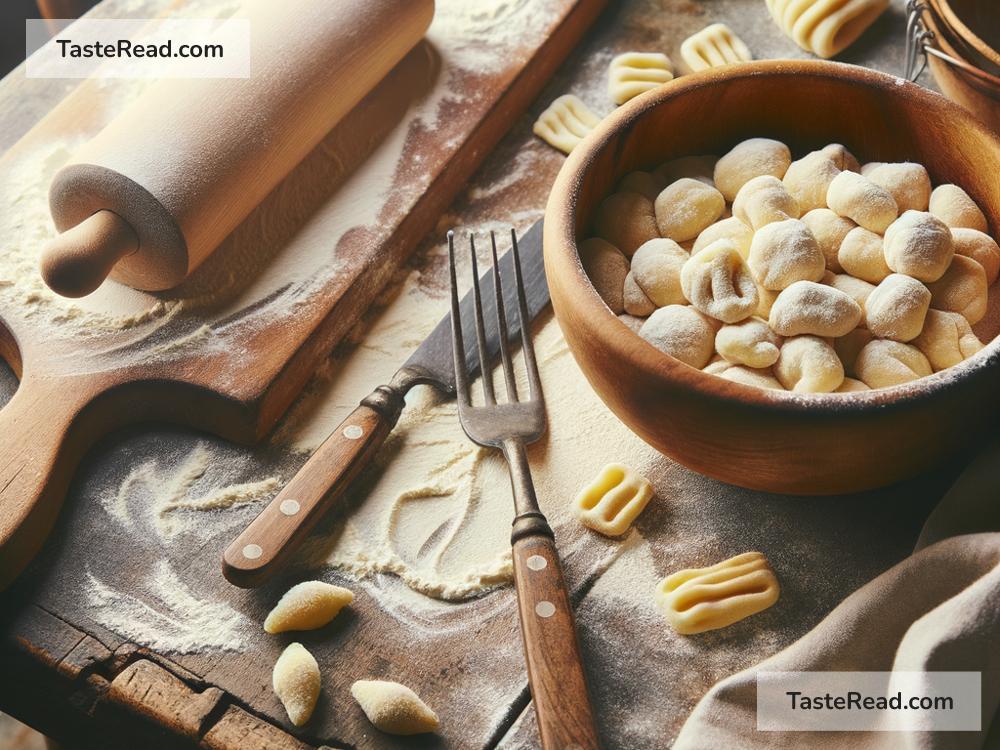The Tale of the Tender Dumpling: How the Italian Gnocchi Came to Be
Imagine a cozy Italian kitchen filled with the aroma of simmering sauce and spices. On the wooden table, a cook with flour-covered hands is busy crafting little pillows of dough that will soon turn into one of Italy’s most beloved dishes: gnocchi. These tender dumplings have a history as rich and savory as their flavor, tracing back through the annals of time to bring comfort and joy to the dinner table. Today, let’s unravel the delicious tale of how the Italian gnocchi came to be.
Gnocchi’s journey begins long before Italy as we know it was formed, back in the era of the Roman Empire. Historians believe that the Romans, known for their knack for creating dishes that stood the test of time, might have been the early pioneers of gnocchi. They made a simple mixture of semolina dough, which they would cook, slice, and then enjoy with a variety of sauces. Picture the grand banquets of ancient Rome, where a form of gnocchi might have graced the tables of emperors and soldiers alike.
As the Roman Empire expanded, it brought its culinary treasures to the far reaches of Europe. With the passage of time, each region began to add its local flair to the Roman invention. What made gnocchi truly evolve, however, was when Europe got acquainted with a game-changing crop: the potato.
The potato was introduced to Europe from the New World in the 16th century, but it took a while before it was widely accepted. Initially viewed with suspicion, the humble spud was about to revolutionize more than just agriculture; it was about to set the stage for the gnocchi we know and love today.
It wasn’t until the 18th century that potatoes became a staple in the European diet, and innovative cooks in Italy experimented with incorporating this New World vegetable into their recipes. They found that potatoes could produce a dough that was lighter and more pliable than the traditional semolina-based versions. By mixing mashed potatoes with flour and sometimes eggs, they created a dough that could be easily shaped into dumplings. And so, the modern version of gnocchi was born.
But how did gnocchi get its distinctive name? The word “gnocchi” may derive from the Italian word “nocca,” meaning knuckle, or from “nocchio,” a term for a knot in the wood. Both words beautifully capture the shape and texture of these delightful dumplings, which are often indented with a fork or a special wooden tool to create grooves. These grooves aren’t just for show; they help the gnocchi hold onto whatever sumptuous sauce they are served with, making each bite a perfect harmony of flavors and textures.
Gnocchi has taken many forms over the centuries, and different regions of Italy have their unique takes on it. For instance, in Lombardy and Veneto, you might find “gnocchi di pane,” a variation made from bread crumbs, milk, and butter. Meanwhile, in Rome, “gnocchi alla romana” is made from semolina flour and baked with cheese, straying from the boiled potato version most are familiar with.
The beauty of gnocchi lies not just in its taste but in its versatility and the local traditions it embodies. Every family might have their version, handed down through generations, each with its own secret tip for getting the texture just right.
Preparing gnocchi at home can be a rewarding venture. It requires only a few simple ingredients: potatoes, flour, and, optionally, eggs. The key to pillow-soft gnocchi is in the technique: using just enough flour to bring the dough together without overworking it, ensuring that your gnocchi will be light and fluffy once cooked.
To cook them, simply drop the gnocchi into boiling salted water. In a matter of minutes, they’ll float to the surface, ready to be scooped up and tossed with your sauce of choice. Whether it’s a rich ragù, a zesty pesto, or just good old butter and sage, gnocchi serves as a delicious canvas for a multitude of flavors.
From the ancient Roman tables to modern kitchens around the world, gnocchi has traversed centuries and continents to become a staple of Italian cuisine. It’s a testament to the power of simple ingredients and the enduring appeal of comfort food. So next time you sink your fork into a soft, sauce-laden gnoccho, remember the rich history behind this humble dumpling and the countless hands that have shaped it into the beloved dish it is today. Bon Appétit!


